Travis Andrews in The Washington Post:
He really loves Blizzards.
“I am,” he says, “the worst.”
More here.
Enjoying the content on 3QD? Help keep us going by donating now.
Travis Andrews in The Washington Post:
He really loves Blizzards.
“I am,” he says, “the worst.”
More here.
Enjoying the content on 3QD? Help keep us going by donating now.
Annamae Sax in Tufts Poetry Blog:
 I’ve often considered poetry as a core piece of therapy for myself. Ever since I was a child, it’s been my biggest way of understanding the world and my own experiences. I see my life through the lens of a poem, and it helps me process and heal whatever I may be going through. I’ve been writing poetry since I was six, and I have always credited it for getting me through traumatic experiences and helping me celebrate the beautiful ones.
I’ve often considered poetry as a core piece of therapy for myself. Ever since I was a child, it’s been my biggest way of understanding the world and my own experiences. I see my life through the lens of a poem, and it helps me process and heal whatever I may be going through. I’ve been writing poetry since I was six, and I have always credited it for getting me through traumatic experiences and helping me celebrate the beautiful ones.
The more I grew as a poet, I found that so many others felt the same way. It seemed like such a vast amount of people found solace in poetry, used it as a form of therapy, as well. I’ve quoted Audre Lorde’s “Poetry is Not a Luxury” more times than I can count. I wondered what work or research had been done about this, seeing as it’s touched so many. Nicole Bouchard wrote on the healing powers of poetry, saying, “Poetry can take the most extreme emotions and bottle them like tinctures that can be used to heal the reader; it is expression- giving a voice to that which we need as human beings to express, that gives poetry its strong influence.” She describes the Pongo Teen Writing Project, which focuses on “Reaching out to children and young adults in juvenile detention centers, homeless shelters, psychiatric hospitals, and other organizations… founder Richard Gold and his team of Pongo volunteers use a carefully constructed model to encourage written expression that will target those areas which are most affecting the youths’ circumstances (early childhood trauma, such as abuse, rape, addiction, death and violence).”
More here.
Enjoying the content on 3QD? Help keep us going by donating now.
I am not always the same in what I say or write.
I change, but not very much.
The color of flowers is not the same in the sun
As beneath a lingering cloud
Or when night falls
And flowers are the color of remembrance.
But anyone who really looks can see they are the same flowers,
And so when I appear not to agree with myself,
Take a good look at me:
If I was facing to the right,
Now I have turned to the left,
But I am always me, standing on the same two feet—
Always the same, thanks to me and to the earth
And to my convinced eyes and ears
And to my clear contiguity of soul . . .
by Fernando Pessoa
from The Complete Works of Alberto Caeiro
New Directions Paperbooks, 2020
Enjoying the content on 3QD? Help keep us going by donating now.
Annie Correal in the New York Times:
 The town of Macondo never existed. It was never supposed to. And yet, here it is.
The town of Macondo never existed. It was never supposed to. And yet, here it is.
The idyllic town in Colombia was the imaginary setting for “One Hundred Years of Solitude,” the 1967 novel that helped Gabriel García Márquez win the Nobel Prize and that, over the years, led to many offers from Hollywood to create an adaptation.
The author always refused, insisting that his novel, in which the real and fantastical converge, could never be rendered onscreen. His Macondo, he said, could never be built.
But now, in a rambling field outside the city of Ibagué, stands Macondo. Built by Netflix from the ground up for the first-ever screen adaptation of the novel, the town has real birds nesting in its trees and dogs wandering its narrow streets.
More here.
Enjoying the content on 3QD? Help keep us going by donating now.
Sara Talpos at Undark:
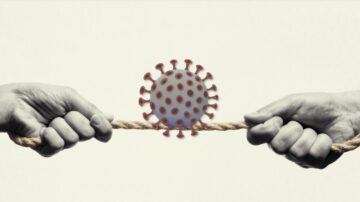 In early 2012, federal officials summoned Michael Imperiale from his home in Ann Arbor, Michigan, to a large conference room in Bethesda, Maryland. There, they handed the virologist drafts of two scientific papers. A foreign government had deemed one draft’s contents so risky that it could not be sent via the postal service or attached to an email.
In early 2012, federal officials summoned Michael Imperiale from his home in Ann Arbor, Michigan, to a large conference room in Bethesda, Maryland. There, they handed the virologist drafts of two scientific papers. A foreign government had deemed one draft’s contents so risky that it could not be sent via the postal service or attached to an email.
The drafts detailed attempts to alter a lethal avian influenza virus, potentially granting it the ability to spread among humans. Such work, according to the U.S. officials who had funded it, was vital for preparing for a potential flu pandemic. But some scientists wondered whether the research itself could spark a cataclysm. Might someone read the papers, which contained details of how the pathogens had been engineered, and use them as blueprints for bioterrorism?
Months before, Imperiale and more than a dozen colleagues had recommended that earlier drafts of the papers be published with some details redacted. But that halfway option wasn’t going to fly. Now they needed to make a choice: Was it worthwhile to publish the papers in full? Or should the manuscripts, with their potential for misuse, not be published at all?
More here.
Enjoying the content on 3QD? Help keep us going by donating now.
Enjoying the content on 3QD? Help keep us going by donating now.
Enjoying the content on 3QD? Help keep us going by donating now.
Molly Huang in Asterisk:
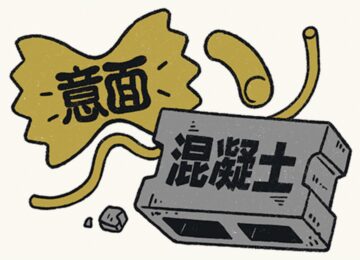 It’s always been a personal fascination of mine what words a culture uses — and what words it lacks. Not only is it a good indication of how native speakers tend to think and feel; the creation of new words reflects new thoughts and new emotions that have become common enough to require a shorthand. Nowhere is this happening faster than on the internet. Every year, dozens of new slang terms spread like wildfire in people’s vocabularies. I thought I’d cover some of the terms I find most interesting that are circulating on the Chinese internet right now.
It’s always been a personal fascination of mine what words a culture uses — and what words it lacks. Not only is it a good indication of how native speakers tend to think and feel; the creation of new words reflects new thoughts and new emotions that have become common enough to require a shorthand. Nowhere is this happening faster than on the internet. Every year, dozens of new slang terms spread like wildfire in people’s vocabularies. I thought I’d cover some of the terms I find most interesting that are circulating on the Chinese internet right now.
The Japanese term “shachiku” (社畜) literally means “company livestock.” It gained popularity in China almost as soon as it was invented. But lately I’ve seen many around Weibo joking that not even livestock are worked like Chinese university graduates — cattle will literally die if you make them work 996 hours (that is, 9 a.m. to 9 p.m., six days a week). For a time, people likened themselves to machines instead. That was until someone found a better term in a 1984 article from the People’s Daily, the CCP’s official newspaper: “human ore.” It refers to the way workers feel they are a resource to be exploited, consumed, and discarded to fuel the engine of progress.
More here.
Enjoying the content on 3QD? Help keep us going by donating now.
Larry Lockridge at The Hedgehog Review:
 It is unlikely the dark conjecture would have occurred to me were I not offspring of one, but my prejudicial lens has no bearing on whether Shakespeare died a suicide. I have scoured biographies old and new and find that nobody over four centuries has entertained the idea in print. Hardly an exception is Edward Bond’s 1973 play Bingo—the character Shakespeare, guilt-ridden for failing to thwart land enclosures near Stratford, takes sugar-coated poison tablets left behind for him by Ben Jonson. Is our myriad-minded Shakespeare, the suicide taboo silently at work, above the degradations of Dante’s seventh circle, reserved for suicides, who must keep company with usurers and sodomites? Or is there no evidence?
It is unlikely the dark conjecture would have occurred to me were I not offspring of one, but my prejudicial lens has no bearing on whether Shakespeare died a suicide. I have scoured biographies old and new and find that nobody over four centuries has entertained the idea in print. Hardly an exception is Edward Bond’s 1973 play Bingo—the character Shakespeare, guilt-ridden for failing to thwart land enclosures near Stratford, takes sugar-coated poison tablets left behind for him by Ben Jonson. Is our myriad-minded Shakespeare, the suicide taboo silently at work, above the degradations of Dante’s seventh circle, reserved for suicides, who must keep company with usurers and sodomites? Or is there no evidence?
Shakespeare’s suicide is plausible as a speculation consistent with what we tend to believe about the connection between creativity and depression. My father, Ross Lockridge, Jr., with a loving wife and four young children, died a suicide at thirty-three, just as his unagented, 1,060-page debut novel, Raintree County, topped the nation’s best-seller lists in early 1948.
more here.
Enjoying the content on 3QD? Help keep us going by donating now.
Lydialyle Gibson in Harvard Magazine:
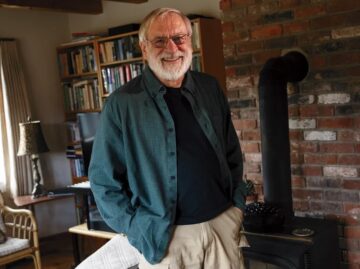 Not long after his wife was diagnosed with Alzheimer’s disease, Tom Lee picked up a book on caregiving, one of the many he’d devour in those early, frightening weeks, when the future felt suddenly impossible to imagine. Amid all the information and advice, he read a line that stopped him cold. “It said, make sure you take care of yourself, and leave at least 15 minutes to yourself every day,” he remembers. “I thought, 15 minutes? Are you kidding me? That’s not even enough time to open a book. When I read that, I really started to wonder what I was in for.”
Not long after his wife was diagnosed with Alzheimer’s disease, Tom Lee picked up a book on caregiving, one of the many he’d devour in those early, frightening weeks, when the future felt suddenly impossible to imagine. Amid all the information and advice, he read a line that stopped him cold. “It said, make sure you take care of yourself, and leave at least 15 minutes to yourself every day,” he remembers. “I thought, 15 minutes? Are you kidding me? That’s not even enough time to open a book. When I read that, I really started to wonder what I was in for.”
Lee and his wife, Antoinette, have been together for almost 50 years, and married for 43. A plant ecologist, he spent his career at the University of New Hampshire, teaching forestry and conservation biology. She was a stay-at-home mother to the couple’s two sons and then an editor at Rhodora, a journal published by the New England Botanical Society. “She’s a wonderful person,” Lee says. “Very bright, very upbeat—and as stubborn as they come.” The two of them loved hiking and gardening together; they took frequent long walks with friends. The small home in New Hampshire where they have lived for decades, on 15 acres of land a couple of miles outside the nearest town, was designed by Antoinette. “She loves it here,” Lee says. “Although—,” he adds, his voice quieting, “her affection for it is maybe starting to fade a bit now.”
More here.
Enjoying the content on 3QD? Help keep us going by donating now.
Clare Zhang in AIP:
 Prioritizing fundamental research over deployment
Prioritizing fundamental research over deploymentProject 2025 looks to focus the Department of Energy on fundamental research that the private sector would not otherwise conduct, arguing that many current DOE programs “act as subsidies to the private sector for government-favored resources.” It proposes eliminating many of the agency’s offices focused on energy technology development as well as programs focused on climate change.
The DOE chapter is authored by Bernard McNamee, who worked in the department during the first Trump administration and later was picked by Trump to serve on the Federal Energy Regulatory Commission from 2018 to 2020. McNamee proposes that DOE prioritize and consolidate its programs based on factors such as relevance to national security, energy security, and scientific discovery. He also calls for a “whole-of-government assessment and consolidation of science,” arguing that recent moves to expand the National Science Foundation’s focus on technology commercialization were “ill-advised.”
At DOE, he suggests eliminating the Advanced Research Projects Agency–Energy as well as offices dedicated to renewable energy, carbon management, technology demonstrations, and loans. If these organizations continue to exist, he proposes reallocating their funding from commercialization and deployment to fundamental research, particularly for countering cyber and physical threats to energy security.
More here.
Enjoying the content on 3QD? Help keep us going by donating now.
Edmund White at the Paris Review:
 The thing about gay life is that you have countless mini-adventures, which years later leave only the faintest grooves on your cortex. The handsome big blond with the sweetest smile and strongest Boston accent I’d ever heard, who wanted to get fucked only and moved out to San Diego, where he caught the eye of many a sailor, got infected with AIDS, and died.
The thing about gay life is that you have countless mini-adventures, which years later leave only the faintest grooves on your cortex. The handsome big blond with the sweetest smile and strongest Boston accent I’d ever heard, who wanted to get fucked only and moved out to San Diego, where he caught the eye of many a sailor, got infected with AIDS, and died.
The young Kennedy-style gay politician whom I invited to dinner after yet another bad affair, on the principle that I should shoot high and aim for the top. He came to dinner more than once, we had “sophisticated” (i.e., cold) sex, and he got AIDS and died.
My French translator, a skinny boy with an enormous dick and fat lips and an encyclopedic knowledge of the French classics from Rabelais to Benjamin Constant, called on me in New York and I immediately groped him—which he thought (rightfully) was disrespectful and unprofessional. I couldn’t explain to him how every male in New York was fair game. He got AIDS and died.
more here.
Enjoying the content on 3QD? Help keep us going by donating now.
and she isn’t divine . . .
If I sometimes speak of her as a living being
It’s because to speak of her I have to use human language
Which gives personality to things
And imposes names on things.
But things have neither names nor personality:
They exist, and the sky is vast and the earth is broad,
And our heart the size of a clenched fist . . .
Blessed am I for everything I don’t know.
Because that everything is what I truly am.
I bask in all this like someone sitting here in the sun.
by Fernando Pessoa
from The Complete Works of Alberto Caeiro
New Directions Paperbook, 2020
Enjoying the content on 3QD? Help keep us going by donating now.
Christopher Lydon: “We’re with the celebrated Scots-accented people’s economist… Before we get to Trump 2, we speak of the lingering Biden paradox. The economy was said to be the saving grace of Joe Biden’s short term, specifically the drive to rebuild the industrial base at home. But the same economy was the undoing of his would-be successor, Kamala Harris—specifically, inflation, a largely hidden cost-of-living crisis in food and energy that hurt real people, poor people most of all.”
Enjoying the content on 3QD? Help keep us going by donating now.
Zack Savitsky in Quanta:
 But despite its fundamental importance, entropy is perhaps the most divisive concept in physics. “Entropy has always been a problem,” Lloyd told me. The confusion stems in part from the way the term gets tossed and twisted between disciplines — it has similar but distinct meanings in everything from physics to information theory to ecology. But it’s also because truly wrapping one’s head around entropy requires taking some deeply uncomfortable philosophical leaps.
But despite its fundamental importance, entropy is perhaps the most divisive concept in physics. “Entropy has always been a problem,” Lloyd told me. The confusion stems in part from the way the term gets tossed and twisted between disciplines — it has similar but distinct meanings in everything from physics to information theory to ecology. But it’s also because truly wrapping one’s head around entropy requires taking some deeply uncomfortable philosophical leaps.
As physicists have worked to unite seemingly disparate fields over the past century, they have cast entropy in a new light — turning the microscope back on the seer and shifting the notion of disorder to one of ignorance. Entropy is seen not as a property intrinsic to a system but as one that’s relative to an observer who interacts with that system. This modern view illuminates the deep link between information and energy, which is now helping to usher in a mini-industrial revolution on the smallest of scales.
Two hundred years after the seeds of entropy were first sown, what’s emerging is a conception of this quantity that’s more opportunistic than nihilistic. The conceptual evolution is upending the old way of thinking, not just about entropy, but about the purpose of science and our role in the universe.
More here.
Enjoying the content on 3QD? Help keep us going by donating now.
Paul Scherz in The Hedgehog Review:
 To say that the American health-care system is in less-than-great working order may strike many as a colossal understatement. Yes, it functions well on the heroic-medicine front. It possesses incomparable medical technology and pharmaceuticals, and it can boast an impressive corps of well-educated and compassionate physicians, nurses, and other health-care workers. For all those strengths, however, American health care labors under mighty challenges, including an overstretched and underfunded public-health system, the increasing concentration of hospitals and even medical practices in the hands of for-profit businesses, and a patchwork health-insurance regime that leaves too many people inadequately covered and gives too much control to insurance-company executives and too little to health-care professionals.
To say that the American health-care system is in less-than-great working order may strike many as a colossal understatement. Yes, it functions well on the heroic-medicine front. It possesses incomparable medical technology and pharmaceuticals, and it can boast an impressive corps of well-educated and compassionate physicians, nurses, and other health-care workers. For all those strengths, however, American health care labors under mighty challenges, including an overstretched and underfunded public-health system, the increasing concentration of hospitals and even medical practices in the hands of for-profit businesses, and a patchwork health-insurance regime that leaves too many people inadequately covered and gives too much control to insurance-company executives and too little to health-care professionals.
Related to, and compounding, those and other problems is a consequential and arguably insidious paradigm shift—one that is moving medicine away from the guiding imperatives of patient care and the cure of illness to an overriding concern with the prediction of health risk, an approach dubbed, with no trace of modesty or irony, precision medicine.
More here.
Enjoying the content on 3QD? Help keep us going by donating now.
Enjoying the content on 3QD? Help keep us going by donating now.
Ed Simon at Poetry Magazine:
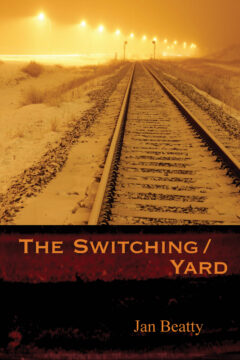 A primary byproduct of ore-smelting is the mixture of oxides and silicon dioxide known as slag. Heaped into giant conical mountains alongside industrial sites, these otherworldly piles are known as slag heaps. Appearing as granulated pyramids of blast furnace refuse, slag heaps can include an assortment of copper, nickel, and zinc removed as non-ferrous material during the refinement of what will become steel. For those raised in industrial regions, such as Pittsburgh, slag heaps were once a common site along rivers such as the Monongahela, Allegheny, and Ohio. These sooty remnants of the Jones & Laughlin Steel Corporation or the Carrie Blast Furnaces are the height of the great Indian mounds that dotted this landscape centuries ago, but rather than a verdant green, these heaps are the color of an overcast Western Pennsylvania sky. They are incongruously beautiful and have a way of getting into the lungs and blood of residents—both literally and metaphorically. As Jan Beatty writes in her raw and gorgeous hybrid work American Bastard: A Memoir (2021), “I am the earth and metal/the slagheap and the ore/my blood fierce yellow.”
A primary byproduct of ore-smelting is the mixture of oxides and silicon dioxide known as slag. Heaped into giant conical mountains alongside industrial sites, these otherworldly piles are known as slag heaps. Appearing as granulated pyramids of blast furnace refuse, slag heaps can include an assortment of copper, nickel, and zinc removed as non-ferrous material during the refinement of what will become steel. For those raised in industrial regions, such as Pittsburgh, slag heaps were once a common site along rivers such as the Monongahela, Allegheny, and Ohio. These sooty remnants of the Jones & Laughlin Steel Corporation or the Carrie Blast Furnaces are the height of the great Indian mounds that dotted this landscape centuries ago, but rather than a verdant green, these heaps are the color of an overcast Western Pennsylvania sky. They are incongruously beautiful and have a way of getting into the lungs and blood of residents—both literally and metaphorically. As Jan Beatty writes in her raw and gorgeous hybrid work American Bastard: A Memoir (2021), “I am the earth and metal/the slagheap and the ore/my blood fierce yellow.”
more here.
Enjoying the content on 3QD? Help keep us going by donating now.
Justin Taylor in Bookforum:
 YOU OPEN BOX 34, take the typescript from its folder. You can see right away that the song is pretty much finished. He’s got the first four verses locked in, save one lingering question about Ma. Should she be forty but say she’s twenty-four, or eighty claiming sixty-four? Or what if she’s twenty but wants you to think she’s sixty-four? Is that better? Nah. But this is small potatoes, a distraction from the real problem, which is the fifth and final verse, which is still stumping him.
YOU OPEN BOX 34, take the typescript from its folder. You can see right away that the song is pretty much finished. He’s got the first four verses locked in, save one lingering question about Ma. Should she be forty but say she’s twenty-four, or eighty claiming sixty-four? Or what if she’s twenty but wants you to think she’s sixty-four? Is that better? Nah. But this is small potatoes, a distraction from the real problem, which is the fifth and final verse, which is still stumping him.
He writes it longhand in the white space below the typing: “I ain’t gonna work on Maggie’s farm no more.” Makes sense that after dealing individually with Maggie’s brother, Pa, and Ma over the last three verses, he’d finish by returning to the farm itself. But now what? He writes “You” on its own line. Adds nothing. He leaves some space, gives it a fresh go:
if you ain’t like everyone else
they think they’ve been insulted
everybody try keep track of the
He pauses. This isn’t working. Maybe he takes a break, stays away for a while, because what’s written next is written with a different implement, something darker and thicker. Could be charcoal pencil but who knows. In the white space beside the abandoned fragment, he writes:
I try My best t be just the way I am
but everybody wants me to be just like them
theythey SAY SING WHILE YOU SLAVE
/ I just bored
And there it is.
More here.
Enjoying the content on 3QD? Help keep us going by donating now.
Shelly Fan in Singularity Hub:
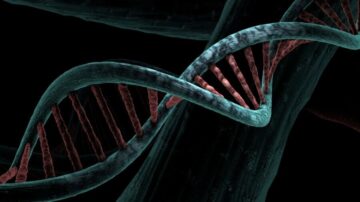 Thousands of new genes are hidden inside the “dark matter” of our genome. Previously thought to be noise left over from evolution, a new study found that some of these tiny DNA snippets can make miniproteins—potentially opening a new universe of treatments, from vaccines to immunotherapies for deadly brain cancers. The preprint, not yet peer-reviewed, is the latest from a global consortium that hunts down potential new genes. Ever since the Human Genome Project completed its first draft at the turn of the century, scientists have tried to decipher the genetic book of life. Buried within the four genetic letters—A, T, C, and G—and the proteins they encode is a wealth of information that could help tackle our most frustrating medical foes, such as cancer.
Thousands of new genes are hidden inside the “dark matter” of our genome. Previously thought to be noise left over from evolution, a new study found that some of these tiny DNA snippets can make miniproteins—potentially opening a new universe of treatments, from vaccines to immunotherapies for deadly brain cancers. The preprint, not yet peer-reviewed, is the latest from a global consortium that hunts down potential new genes. Ever since the Human Genome Project completed its first draft at the turn of the century, scientists have tried to decipher the genetic book of life. Buried within the four genetic letters—A, T, C, and G—and the proteins they encode is a wealth of information that could help tackle our most frustrating medical foes, such as cancer.
The Human Genome Project’s initial findings came as a surprise. Scientists found less than 30,000 genes that build our bodies and keep them running—roughly a third of that previously predicted. Now, roughly 20 years later, as the technologies that sequence our DNA or map proteins have become increasingly sophisticated, scientists are asking: “What have we missed?”
The new study filled the gap by digging into relatively unexplored portions of the genome. Called “non-coding,” these parts haven’t yet been linked to any proteins. Combining several existing datasets, the team zeroed in on thousands of potential new genes that make roughly 3,000 miniproteins.
More here.
Enjoying the content on 3QD? Help keep us going by donating now.